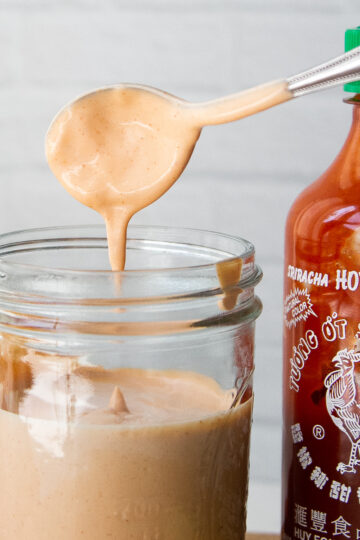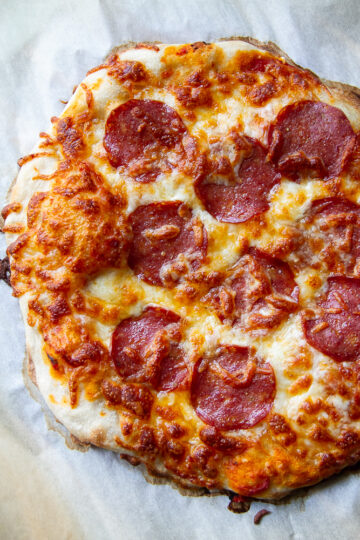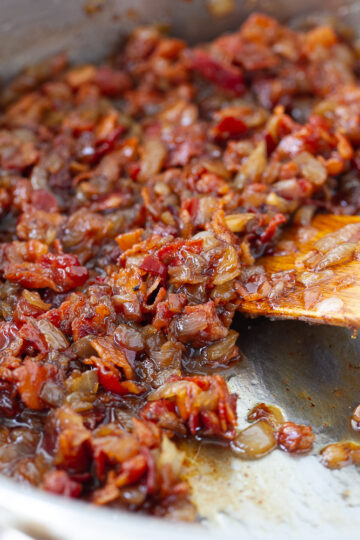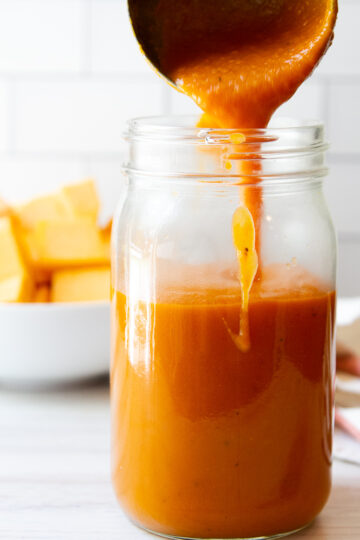Let me guess? You shelled out $15 for a tiny jar of ghee, and you’re trying to figure out how to make ghee aka clarified butter yourself? Welcome! Thankfully all you need is a few sticks of butter and some patience. I'll walk you through making this “liquid gold” – it’s easier than you think.
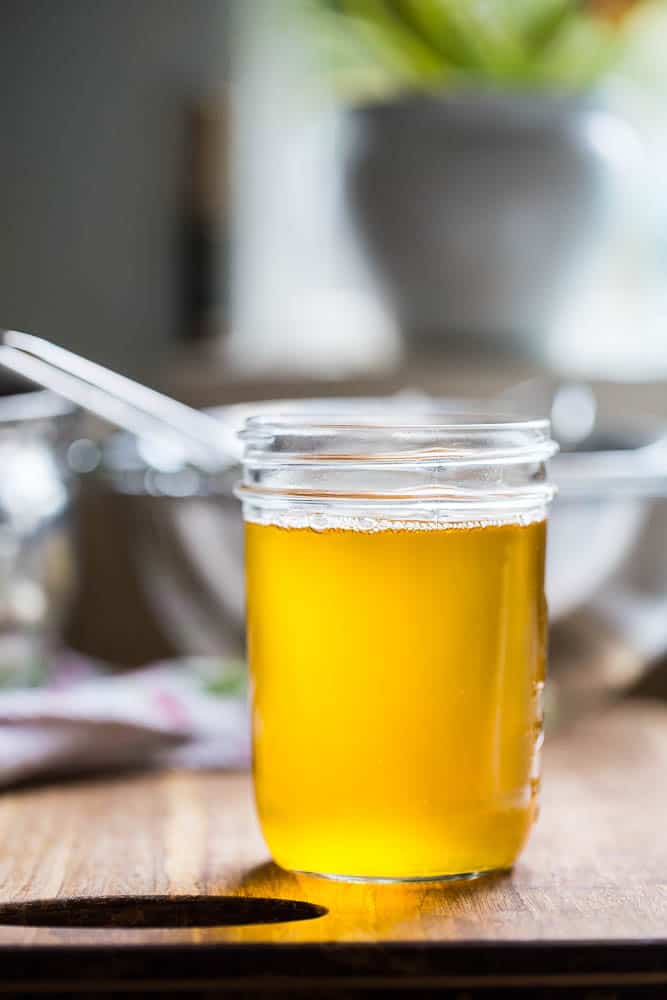
I started making ghee several years ago during a round of Whole30 (since ghee is compliant and butter isn’t). Let me tell you – ghee isn’t just a replacement for butter. It deserves its own special category of greatness. Try roasting some vegetables tossed in ghee – you’ll never want to go back to regular cooking oil.
What is Clarified Butter?
First off, if you don't know what ghee is it's basically the same as clarified butter. Or butter that has had its milk solids removed. Don't be scared. It's a lot easier than it sounds.
What's the benefit of using ghee? Nutritionally speaking it's similar to butter, but since there are no milk proteins (solids), it may be more tolerable for you if you're sensitive to dairy.
The biggest benefit of cooking with ghee is that it has a high smoking point. You can cook ghee at a higher temperature than you can butter since it's the milk solids that tend to burn.
SO, you can get the flavor of butter (more like, browned butter) with the versatility of avocado or coconut oil! Roasting vegetables in ghee is a game changer. There's a reason why people call it liquid gold.
Also, ghee is Whole30 compliant. Butter is not.
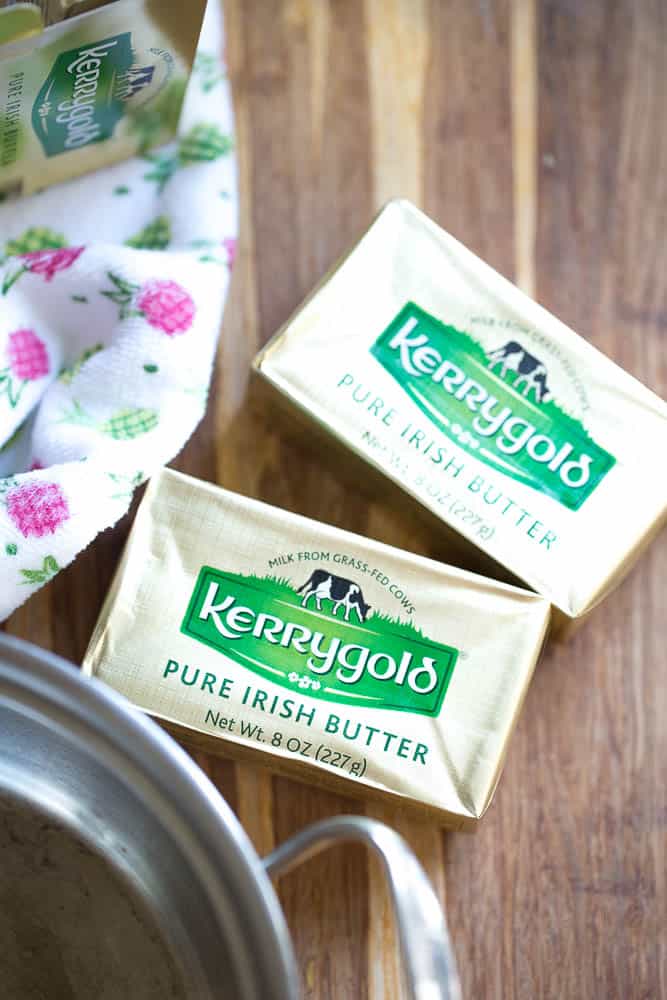
What Kind of Butter Should I Use for Making Clarified Butter?
Technically you an use any kind of butter for this, but if you want high-quality ghee that will knock your socks off, use high-quality butter. I love Kerrygold grass-fed butter -- especially for this. It makes such rich, flavorful ghee.
I use salted butter, but you can definitely use unsalted butter if you want. Either way is fine.
You can also use whatever amount of butter you like. For this recipe, I used a pound. Cooking time will depend on how much butter you use, but the process is still the same.
Are you ready for this? Let's start!
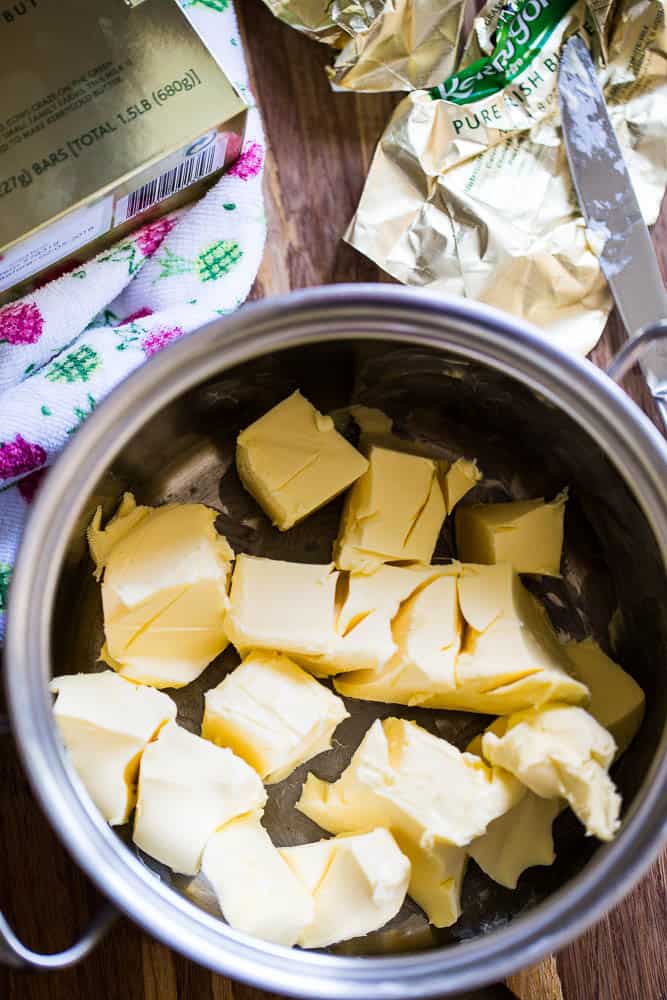
How to Make Ghee
Cut the butter into chunks and put them in a heavy-bottomed saucepan.
Or if you're like me, throw it in there whole because you forgot to cut it, and then hack at it with a butter knife to break it up. Honestly, it doesn't matter if it looks like a 2-year-old cut it because it's all getting melted anyway.
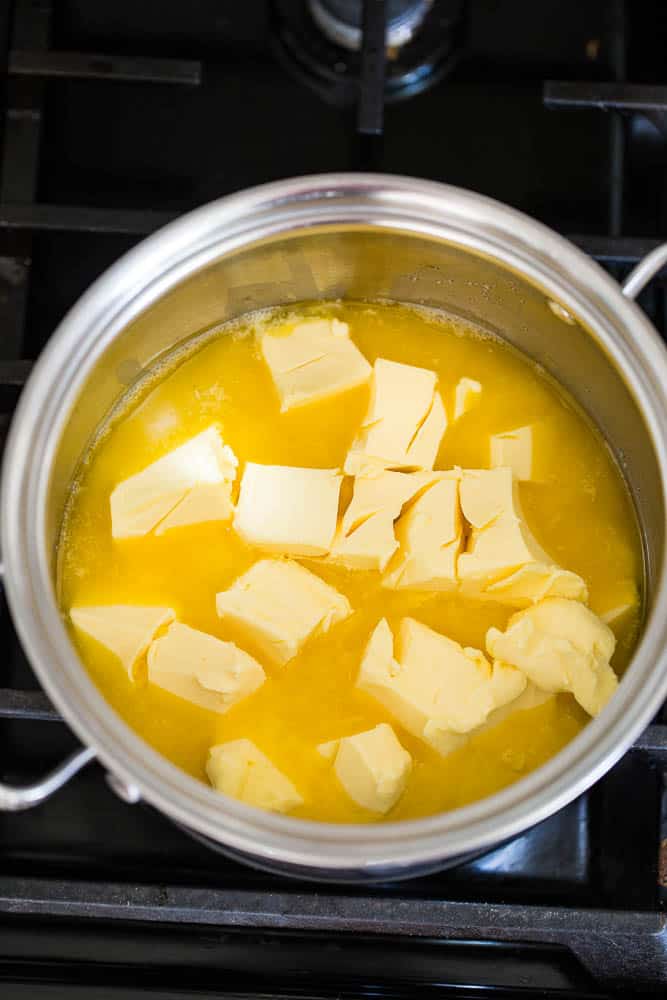
Turn the saucepan to medium-low heat and melt the butter slowly.
Tips for Making Ghee Butter
You don't want it melting too fast or sizzling. It's going to cook for a while and you don't want to burn it right off the bat.
There are a lot of ghee recipes out there that are flavored -- feel free to play with that! Garlic or fresh herbs infused into ghee is super tasty.
If you decide to make flavored ghee, add the flavorings now as the butter starts to melt.
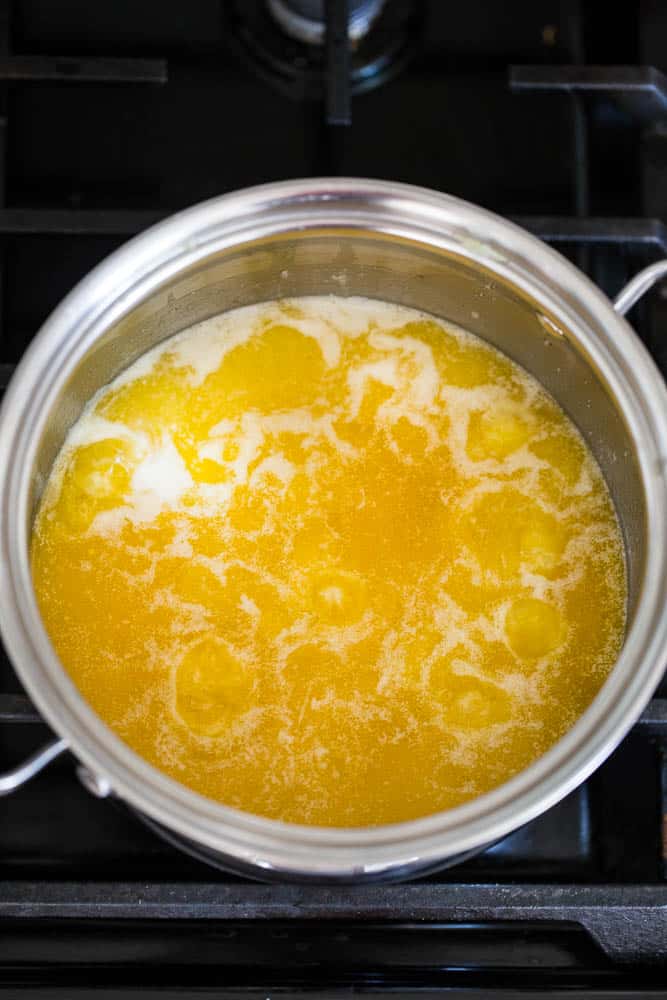
When all the butter has melted, let it gently simmer. It shouldn't boil rapidly or else it'll burn. If it starts to splatter and bubble really big, turn the heat down. The last thing you want is a big pot full of burned butter. *crying emoji*
Oh, and DON'T STIR IT.
This simmering phase is when the butter starts to separate from the milk solids. They'll bubble to the top and then sink to the bottom. Just let them do their thing.
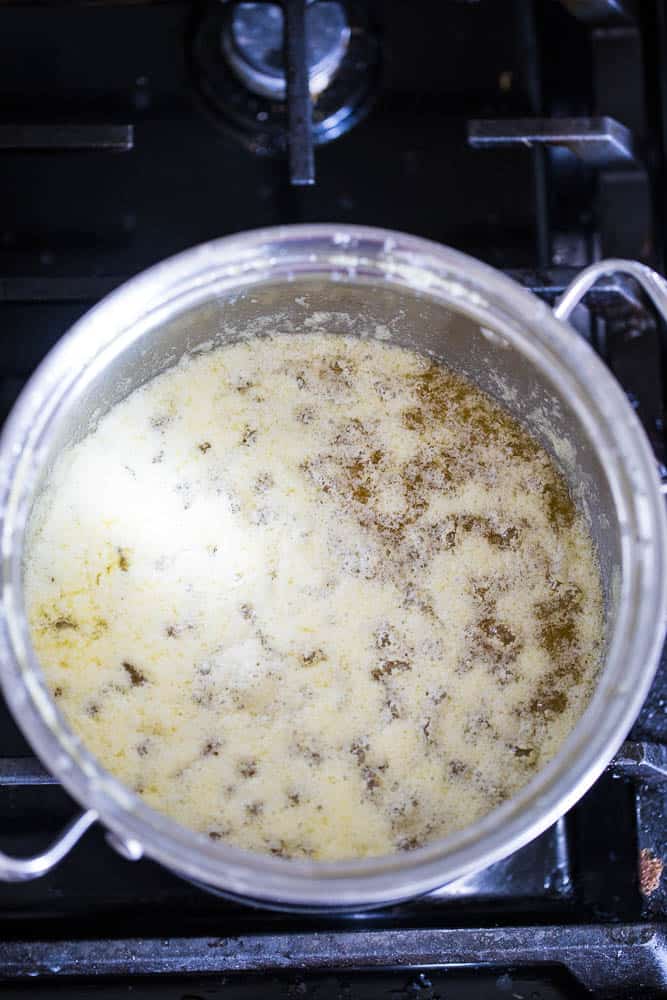
After several minutes a thick, chunky foam will form on the top -- there are those milk solids! This is a good thing. Just let the "almost ghee" keep simmering.
AND DON'T STIR IT. In case you forgot. Heh.
Oh, I left a crusty on my stove for you, too. #reallife
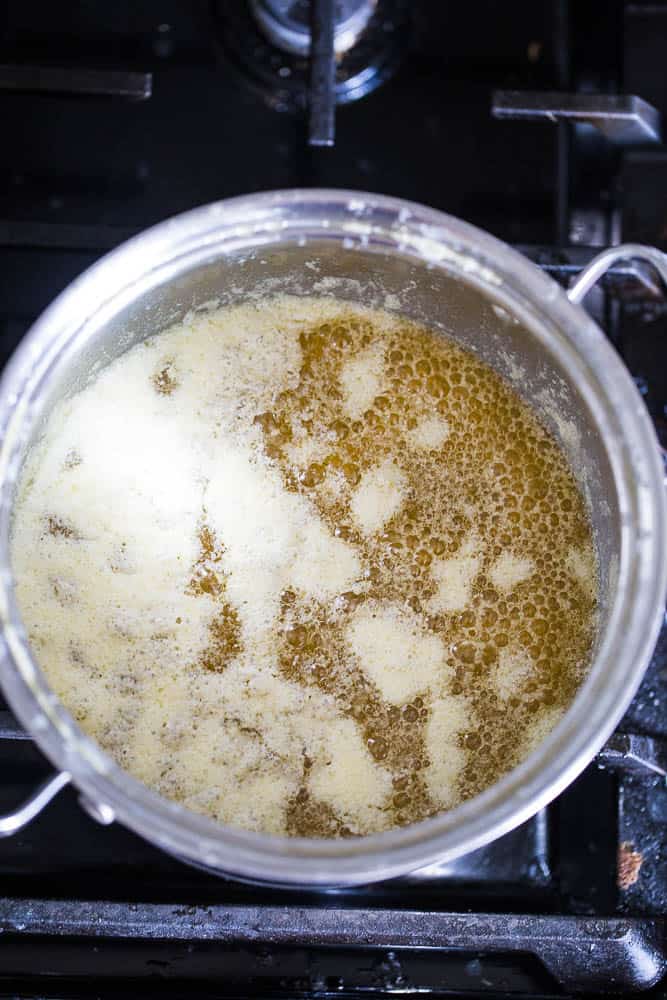
After about 15-20 minutes you'll notice the foam begin to dissipate. The butter will turn from cloudy to clear, too. That chunky foam won't all go away completely, but you'll see spots begin to clear on the surface.
And, just a reminder, don't stir it. (Am I being annoying yet?)
I know you're probably tempted to stir, but what's happening is the milk solids are falling to the bottom of the saucepan and you don't want to kick them up and mix them around again.
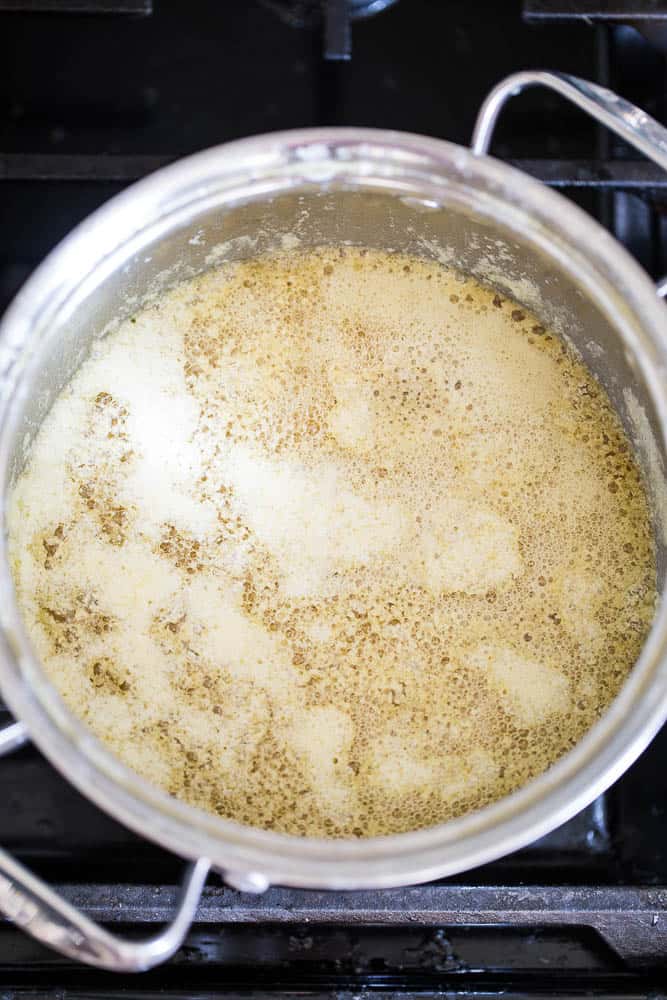
After another several minutes, you'll see a finer, "fizzy" looking foam begin to form with tiny bubbles. This is your signal that you're finished simmering! Turn the heat off and let the pot sit until it stops bubbling.
So, the butter should simmer about 25-30 minutes total for 1 pound of butter. And you don't even have to stir it. Just keep an eye on it.
You could get in an episode of Parks & Rec during that time. Or clean your kitchen, if you're one of those responsible types. (I go back and forth depending on what mood I'm in.)
At this point, let it sit and cool for a bit. More of those milk solids should fall to the bottom of the pot. It's OK if you still have some floating around on top because we're going to strain it now.
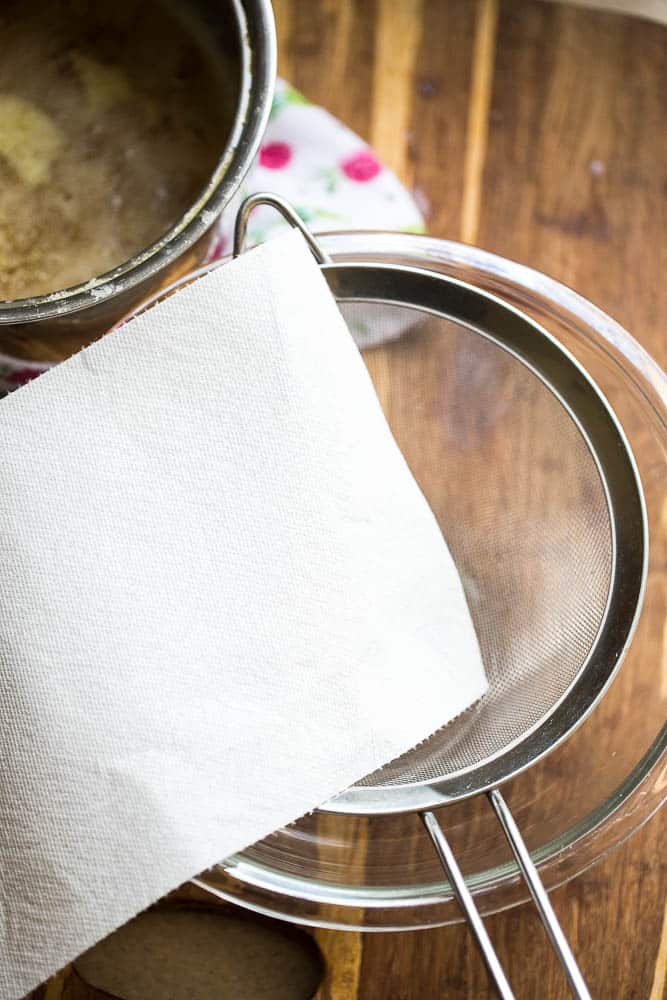
Straining Clarified Butter Ghee
Get a medium size bowl and put a fine-mesh strainer inside of it. I like this set of three metal mesh strainers. I use them ALL the time. That big one also comes in handy for when I make homemade coconut milk.
Put a paper towel over the top of the strainer, too.
You could also use a coffee strainer for this or some cheesecloth. 99% of the time I do not have cheesecloth, and the ONE time I did, I wasn't sure what to do with it after I used it. Do you wash it? Do you throw it out? (Seems like a big waste of money if it just gets thrown out after one use.)
I just use a paper towel. It gets the job done.
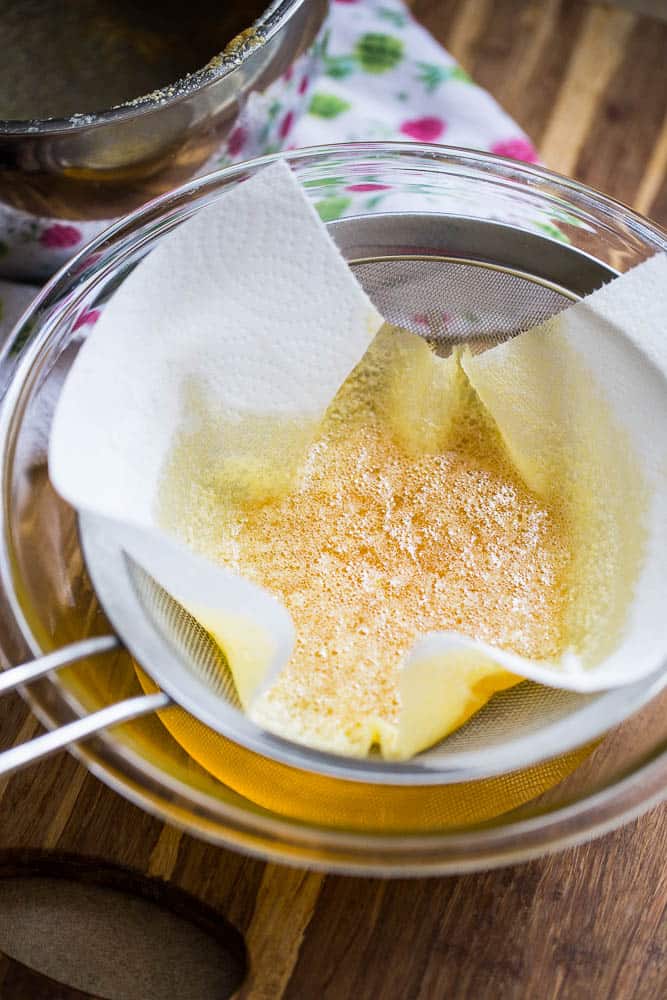
Pour the butter into the paper towel-lined strainer, and let it strain and start removing any milk solids that are still floating around! You may have some stuff stuck to the bottom of your pan, but if you let it soak for a few hours it cleans up really well.
The straining part doesn't take too terribly long. Maybe 5-10 minutes. You can use a rubber spatula and move the ghee in the strainer around to let more of it strain through.
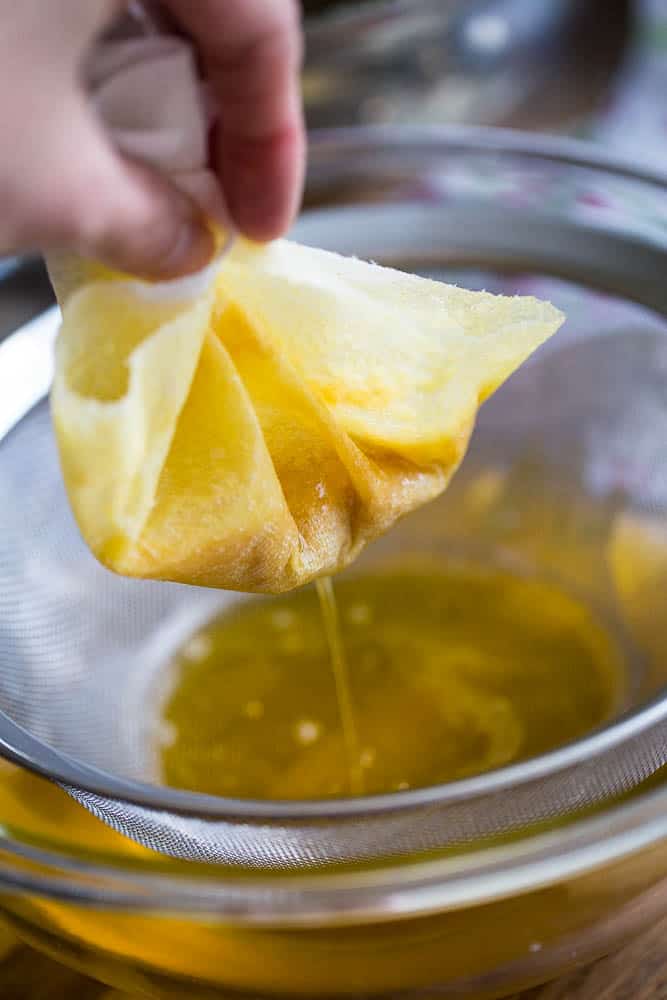
Discard the stuff in the paper towel, letting as much ghee drizzle out as you can. You should only have a couple tablespoons worth of milk solids in there.
At this point, you can let the ghee cool for a while before storing it.
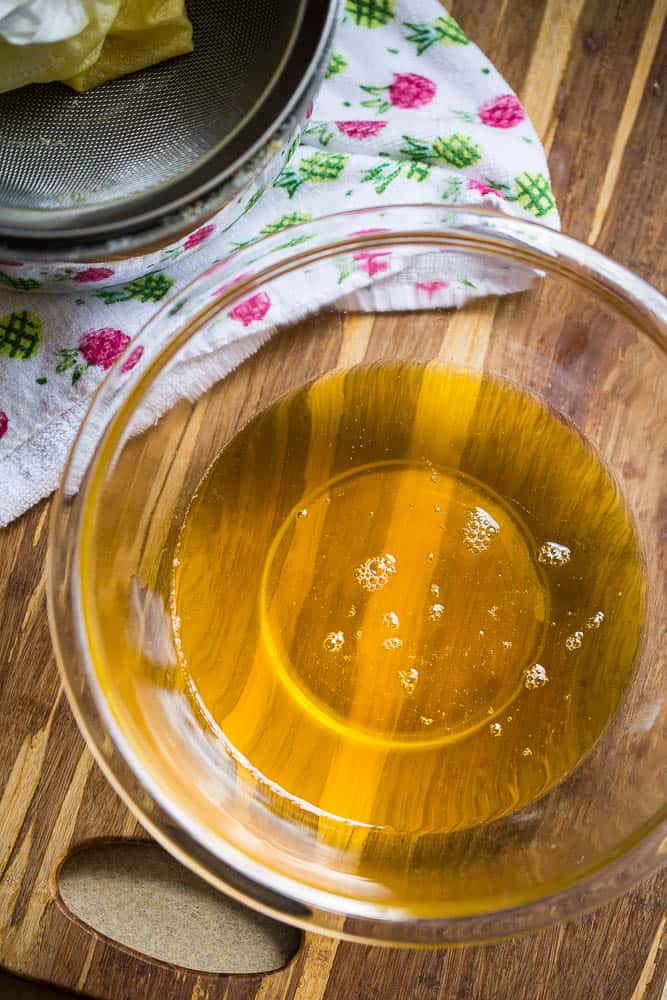
Et voila! Ghee! Isn't it pretty?
Ways to Use this Clarified Butter Recipe
Ghee is an all-purpose cooking fat, but because it takes a little effort to make (more than buying avocado oil at Costco), I try to use it when it will really shine. Here are a few of my favorite recipes that are made SO much better by using ghee:
- Easy Instant Pot Garlic Mashed Potatoes -- By using ghee in place of butter and alternative milk, you can make Whole30 compliant mashed potatoes!
- Crispy Oven Sweet Potato Hashbrowns -- If you've never used ghee to make hashbrowns, YOU MUST. This is the best way to get crispy sweet potato hashbrowns, too. You can also use this method with regular potatoes.
- Instant Pot Cauliflower Puree with Rosemary and Garlic -- If you're doing a round of Whole30, using ghee in mashed potatoes and mashed cauliflower makes them taste even better than adding butter. (Seriously.) I love how easy this cauliflower puree is to make in my Instant Pot!
- Magical Sauteed Green Beans -- These were the first green beans that my kids actually loved to eat. Using ghee (or bacon drippings if you have them!) takes them over the top. They're so, SO good.
- Grilled Cajun Foil-Packet Salmon -- I love adding little pats of butter on top of my foil-packet salmon before grilling or roasting it. It adds a ton of flavor and richnesses. Swapping out the butter for ghee adds another level of nutty flavor!
Storing Homemade Ghee
At this point you can transfer it to a clean glass jar -- it actually fits perfectly in a pint-size mason jar. You can leave it on the counter to use for about 2 months or store it in the fridge for up to 6 months. Also, as it cools, it'll turn opaque and thicken up. Don't worry, this is normal.
Now, go fry an egg and be forever converted to the nutty, brown-buttery deliciousness that is ghee. You'll wonder why you didn't switch out your cooking oil sooner!
Here's the recipe and instructions for making homemade ghee! I'd love to hear how it goes and what you think! If you have any comments or questions, just drop me a comment below or send me a message.
I also love seeing you cook my creations -- if you share them online, tag me using @perrysplate or #perrysplate so I can happy dance with you!
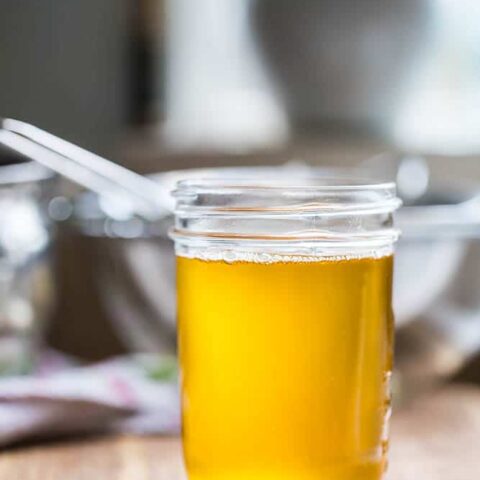
Homemade Ghee Butter
If you've never made your own ghee, it's really easy! Using high-quality butter makes such delicious ghee, too. I love using Kerrygold grass-fed butter.
Ingredients
- 1 pound of high-quality butter (preferably grass-fed)
Instructions
- Cut the butter into large pieces and melt them in a medium saucepan over medium-low heat.
- Let the butter simmer for 20-25 minutes. If it starts to bubble or splatter too much, turn the heat down to low. The butter will form a thick foam on top for most of that time.
- As it simmers, the thick foam will begin to subside and then a few minutes later a more fine, fizzy-looking foam will start to form. This is your signal to remove the butter from the stove.
- Let the butter cool until it stops bubbling. Meanwhile, prepare to strain the butter by nesting a metal, fine-mesh strainer in a medium bowl. Lay a paper towel in the strainer.
- Pour the butter through the paper-towel lined strainer to strain the milk solids from the butter.
- Voila! Ghee! Pour the ghee into a lidded container. It fits perfectly in a pint-sized mason jar.
- You can store it at room temperature for about 2 months or in the fridge for 6 months.
This post may contain affiliate links. Any purchases made by using these links won't cost you any extra and helps keep my content free. These links may be Amazon links as I am part of the Amazon Associate Program.

